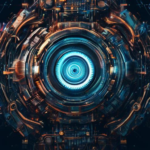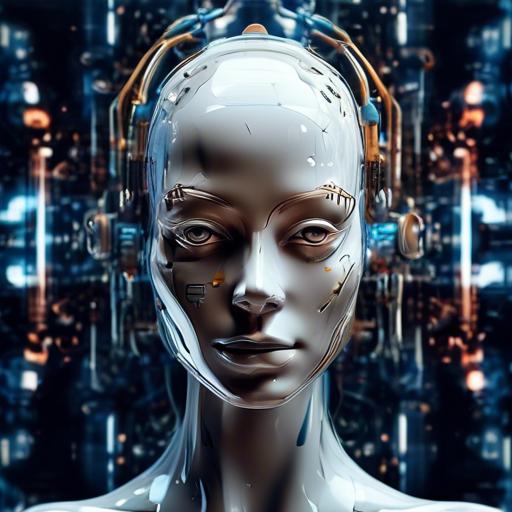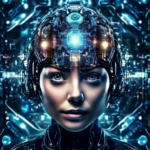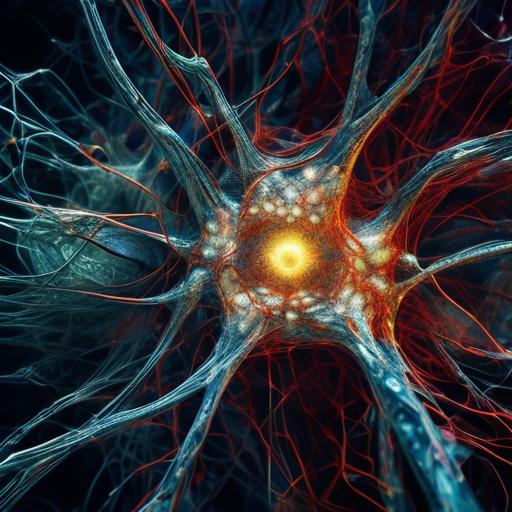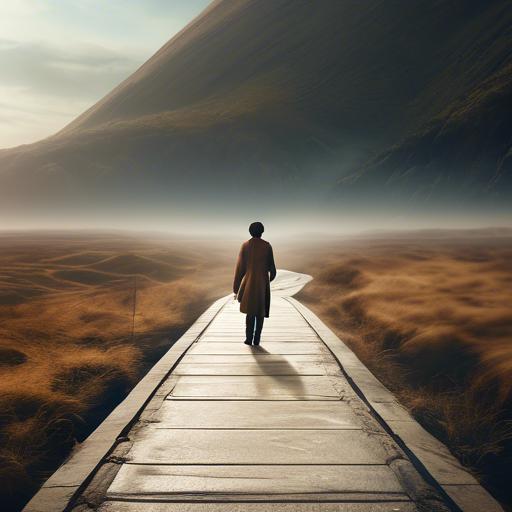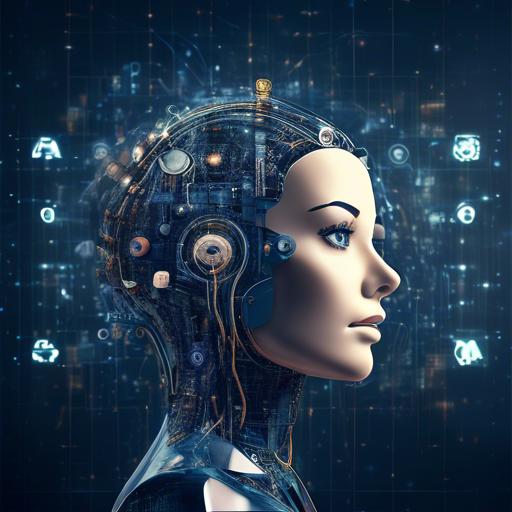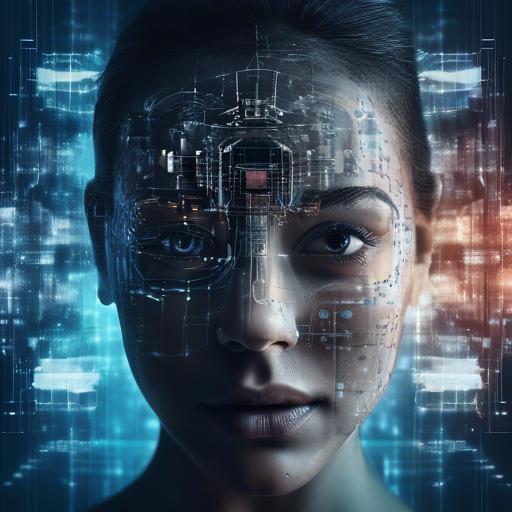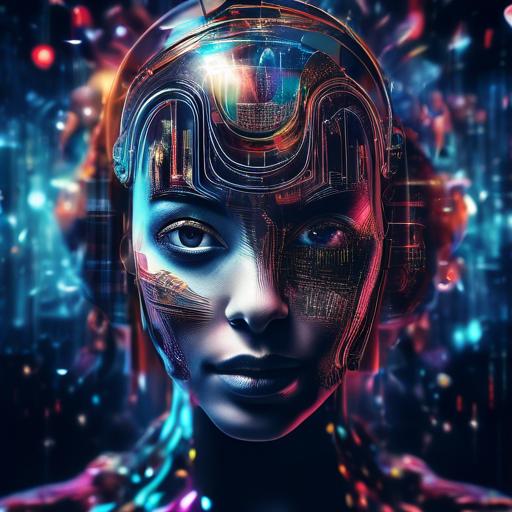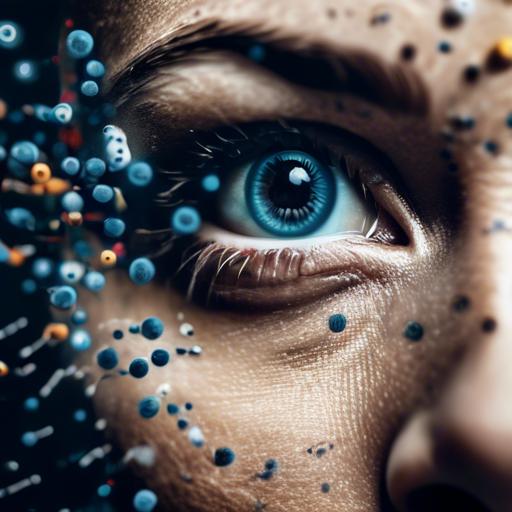In the heart of our ever-evolving digital age, artificial intelligence has taken on the role of a modern-day alchemist, transforming the seemingly mundane into creations that tantalize the senses and defy imagination. Among its most astounding feats is AI-based image synthesis—a revolutionary frontier where pixels and algorithms coalesce to birth images from the ether of data. Whether you’re an intrigued novice or a seasoned tech enthusiast, this journey through the fundamentals of AI-based image synthesis promises to demystify its complexity and help you embrace its boundless potential. Prepare to step into a world where creativity and code converge, unlocking doors to innovations that once existed only in dreams. Welcome, dear reader, to a realm where every click and keystroke can conjure visual wonders and expand the horizons of the imaginable.
Table of Contents
- Understanding the Core Concepts of AI Image Synthesis
- Diving Deep into Machine Learning Models and Techniques
- Harnessing the Power of Neural Networks for Image Creation
- Ethical Considerations in AI-Generated Imagery
- Practical Applications of AI in Digital Art and Design
- Optimizing AI Tools for Enhanced Image Quality
- Troubleshooting Common Challenges in AI Image Synthesis
- Future Trends and Innovations in AI Driven Visuals
- Empowering Creativity with AI: Tips and Best Practices
- Concluding Remarks
Understanding the Core Concepts of AI Image Synthesis
At the heart of **AI image synthesis** lies a combination of groundbreaking technologies and ingenious algorithms. One of the primary techniques is **Generative Adversarial Networks (GANs)**. GANs operate using two neural networks—one generates new images (the generator), while the other evaluates them (the discriminator). This duo works in tandem, with the generator trying to fool the discriminator by creating increasingly realistic images, leading to high-quality synthetic images over time.
Another crucial concept is **Style Transfer**. This method allows an AI model to blend the content of one image with the style of another, creating a novel image that merges characteristics from both sources. For instance, Style Transfer can transform a photograph to look like a famous painting, enabling innovative artistic expressions and applications in media and design.
In the realm of data, **training datasets** play a pivotal role. These datasets, often vast and diverse, provide the AI models with the examples they need to learn and generate realistic images. The quality and variety of these datasets significantly impact the AI’s ability to produce high-fidelity images. Here’s a comparison of some common image datasets used:
| Dataset | Description |
|---|---|
| ImageNet | A large-scale dataset with millions of images categorized into 1,000 classes. |
| COCO | Includes complex everyday scenes with multiple objects. |
| MNIST | Contains thousands of handwritten digit images for simple image recognition tasks. |
AI image synthesis also benefits immensely from **transfer learning**, where pre-trained models are fine-tuned on specific tasks or datasets. This approach reduces the time and resources needed to train models from scratch, while still achieving remarkable results, especially in specialized fields such as medical imaging or satellite imagery.
To sum it up, the synthesis of images using AI rests on a foundation built by sophisticated neural networks, diverse datasets, and innovative techniques like GANs and Style Transfer. By understanding these core concepts, one can truly appreciate the intersection of art and technology driving the future of synthetic image generation.
Diving Deep into Machine Learning Models and Techniques
The realm of AI-based image synthesis marries cutting-edge machine learning algorithms with innovative techniques to create lifelike visuals from mere data. At its core, this process relies on meticulously crafted models designed to mimic the way humans perceive and recreate images. Let’s delve into some of the fundamental components and methods that make this technological marvel possible.
One of the cornerstones in this field is **Generative Adversarial Networks (GANs)**. These networks consist of two competing models: the generator, which fabricates images, and the discriminator, which evaluates their authenticity. The interplay between these models results in remarkably realistic images. Over time, the generator becomes adept at producing images that are nearly indistinguishable from real ones, thanks to constant feedback from the discriminator.
Another trailblazing technique is the use of **Convolutional Neural Networks (CNNs)**. These networks excel at processing pixel data due to their layered structure, which captures hierarchical patterns in images. CNNs are particularly effective in tasks such as image classification, segmentation, and enhancement. By learning spatial hierarchies, they contribute significantly to the accuracy and quality of synthesized images.
When dealing with text-to-image synthesis, **Variational Autoencoders (VAEs)** step into the spotlight. They work by encoding input data into a latent space and then decoding it to produce new images. This technique allows for controlled variations in the output, offering versatility in generating diverse and creative visuals. VAEs are especially useful in scenarios where the goal is to produce images that adhere to specific stylistic guidelines.
**Reinforcement Learning (RL)** also plays a pivotal role in refining image synthesis. By simulating an environment where the AI model must navigate and make decisions, RL facilitates continuous improvement in image generation. The model receives rewards based on the accuracy and realism of the images it produces, driving it to evolve and enhance its performance over time.
Let’s summarize the key models and techniques in a quick reference guide:
| Technique | Description |
|---|---|
| GANs | Generates high-quality images using a dual-model approach |
| CNNs | Processes pixel data to capture hierarchical patterns |
| VAEs | Creates diverse images with controlled variations |
| RL | Optimizes image generation through environment simulation |
Harnessing the Power of Neural Networks for Image Creation
At the core of AI-driven image creation lies the intricate architecture of neural networks, specifically **Generative Adversarial Networks (GANs)**. These networks work by pitting two neural networks against each other: a generator, which creates images, and a discriminator, which evaluates them. Over time, this adversarial process refines the output, producing images that can be astonishingly close to reality.
The applications of this technology are vast and varied:
- Art and Design: AI can assist artists in generating novel patterns or even complete artworks.
- Entertainment: From movie CGI to video game graphics, neural networks provide an endless well of creativity.
- Advertising: Custom images tailored to target demographics can be synthesized efficiently.
For those involved in image creation and design, understanding the core components of neural network-based image synthesis can be transformative. Key factors include:
- Data Quality: The neural network’s output is only as good as the data it is trained on.
- Algorithm Selection: Different approaches may yield varying results depending on the desired outcome.
- Computational Power: High-quality image synthesis often demands significant computational resources.
Here’s a snapshot of common neural network techniques used in image synthesis, along with their utilities and complexities:
| Technique | Utility | Complexity |
|---|---|---|
| GANs | Realistic image generation | High |
| Convolutional Neural Networks (CNNs) | Image recognition and enhancement | Medium |
| Autoencoders | Noise reduction and image compression | Medium |
| VAE (Variational Autoencoders) | Generating diverse images | Medium |
For image creators and designers, harnessing these technologies can lead to a seismic shift in how we approach creative tasks. By leveraging neural networks, we can unlock doors to new realms of possibility, transforming the landscape of digital art and media.
Ethical Considerations in AI-Generated Imagery
AI-generated imagery has revolutionized creative industries, but it also introduces a myriad of ethical dilemmas. How we navigate these challenges will profoundly shape the future of digital art and media.
One major concern is the **authenticity and ownership** of AI-created works. When an algorithm generates an image, questions arise about who holds the copyright—the programmer, the user, or perhaps no one at all? This ambiguity can lead to legal disputes and hinders the equitable distribution of credit and profits.
- Clear Attribution: Establishing a system to credit human contributors, such as the developers and input providers.
- Protecting Originality: Ensuring AI-generated content doesn’t infringe on existing copyrights.
- Legal Frameworks: Updating laws to address the unique challenges of AI in creative fields.
Another critical issue is the **potential for misuse**. AI can create hyper-realistic fake images, often called deepfakes, which can be used maliciously. These fakes pose significant risks, from misinformation campaigns to personal privacy violations.
| Ethical Concern | Description |
|---|---|
| Authenticity | Who owns AI-generated images? |
| Privacy | Risks of deepfake misuse. |
| Diversification | Bias in algorithmic data. |
Moreover, issues of **bias and representation** in AI-generated imagery cannot be ignored. Training datasets often reflect societal biases, leading to skewed outputs that can perpetuate stereotypes or exclude minority perspectives. This underlines the necessity for inclusive and equitable training data.
- Inclusive Datasets: Curating diverse and representative datasets.
- Bias Mitigation: Employing techniques to reduce algorithmic bias.
- Community Engagement: Involving diverse communities in the AI development process.
By tackling these ethical considerations head-on, we can harness the power of AI-generated imagery responsibly, fostering innovation while safeguarding integrity and equality.
Practical Applications of AI in Digital Art and Design
AI and machine learning technologies are revolutionizing the way artists and designers create and manipulate digital content. Modern algorithms can now generate entirely new images, transforming the landscape of digital art and design. Here are some practical applications that are making waves in the industry:
- Artwork Generation: AI technologies like GANs (Generative Adversarial Networks) can create stunning, original pieces of artwork. These algorithms learn from existing datasets to produce images that mimic the style and nuances of human-created art.
- Image Enhancement: AI tools can upscale images, enhance details, and improve the quality of digital designs. This is particularly useful for restoring old photos or rescaling artwork without losing quality.
- Style Transfer: This fascinating application allows artists to apply the style of one image (like a famous painting) to another. Tools like DeepArt and Prisma use AI to transform ordinary photos into unique works of art.
But how do these applications measure up in a real-world setting? Here’s a quick comparison of some popular AI tools used in digital design:
| AI Tool | Primary Use | Key Feature |
|---|---|---|
| DeepArt | Style Transfer | Applies artistic styles to photos |
| NVIDIA GauGAN | Artwork Generation | Turns sketches into realistic images |
| Adobe Photoshop Neural Filters | Image Enhancement | Improves image quality and details |
With AI-driven tools, professional designers and hobbyists alike can push the boundaries of creativity. These technologies aren’t just limited to creating new images; they can also help streamline the design process, allowing more time for artistic exploration and less for repetitive tasks. From concept art and pattern design to 3D modeling, the possibilities are endless with AI on your canvas.
Optimizing AI Tools for Enhanced Image Quality
A pivotal aspect of AI-based image synthesis is leveraging advanced algorithms to elevate image quality. These tools utilize a variety of techniques to achieve this, focusing on elements such as **noise reduction**, **super-resolution**, and **color correction**. By fine-tuning these aspects, AI can transform grainy, low-resolution photos into crisp, high-definition visuals that are rich in detail.
Key Methods to Optimize Image Quality:
- Noise Reduction: Using AI to filter out visual artifacts that distort the image.
- Super-Resolution: Enhancing the resolution of images beyond their original quality.
- Color Correction: Adjusting colors to make visuals more vibrant and accurate.
Several AI techniques can be employed for these optimizations. **Generative Adversarial Networks (GANs)**, for instance, play a crucial role in generating high-quality images by pitting two neural networks against each other to refine outputs continuously. Another method, **Convolutional Neural Networks (CNNs)**, excels in recognizing patterns and textures to improve the image details. Combining GANs and CNNs often leads to superior results.
| Technique | Purpose |
|---|---|
| GANs | Generate high-quality images |
| CNNs | Recognize patterns and textures |
Speed and efficiency are also vital. **TensorFlow** and **PyTorch** streamline the process of deploying these AI tools, allowing for faster image processing. Leveraging cloud services like **Google Cloud AI** and **AWS Machine Learning** can further enhance the performance, providing scalable infrastructures that handle extensive datasets with ease.
user-friendly interfaces and customization options make these AI tools accessible even to those without deep technical expertise. Applications such as **Adobe Photoshop’s Neural Filters** or **Topaz Labs’ AI Gigapixel** offer intuitive platforms for users to refine images with just a few clicks. This democratization of advanced image synthesis technology empowers creators and businesses to produce stunning visuals effortlessly.
Troubleshooting Common Challenges in AI Image Synthesis
Even the most experienced developers encounter hurdles while working with AI-driven image synthesis. Here are the most frequently faced challenges and some strategies to overcome them:
-
Model Overfitting: One common pitfall is overfitting, where the AI becomes so attuned to your training data that it fails to perform well on new, unseen data. To tackle this:
- Use validation techniques like cross-validation.
- Implement dropout layers in your neural network.
- Augment your dataset with variations to provide more diverse examples.
-
Insufficient Training Data: High-quality, varied data is the lifeblood of successful AI models. If you’re struggling with inadequate data:
- Utilize data augmentation techniques to expand your dataset synthetically.
- Leverage pre-trained models that come with large-scale training already performed.
- Consider crowd-sourcing or partnering with organizations to gather more data.
Maintaining a balance between computational resources and the quality of synthesized images can be daunting. High-resolution models require extensive GPU time, running up both costs and development time. Use these approaches to strike a balance:
- Start with lower-resolution images and incrementally increase the quality as your model improves.
- Optimize your code to reduce unnecessary computations.
- Consider using cloud-based services for additional computational capacity.
| Problem | Solution |
|---|---|
| Overfitting | Cross-validation, dropout layers, data augmentation |
| Insufficient Data | Data augmentation, pre-trained models, partnerships |
| Resource Constraints | Lower resolutions, code optimization, cloud services |
Another critical issue is ensuring ethical considerations in your AI model. Here’s how you can maintain ethical standards:
- Bias Reduction: Make sure your dataset is diverse and representative.
- Transparency: Keep detailed records of how your model makes decisions.
- Privacy: Anonymize sensitive data to protect user information.
By focusing on these areas, you can navigate common obstacles in AI image synthesis and create more reliable and ethical projects.
Future Trends and Innovations in AI Driven Visuals
As we forge ahead into the realm of AI-enhanced imagery, we find ourselves on the cusp of revolutionary trends and groundbreaking innovations. The convergence of deep learning algorithms and advanced computational techniques promises to redefine our visual landscapes, making what once seemed futuristic, a present reality. Here’s a glimpse into the exciting developments shaping the future of AI-driven visuals:
- Interactive Experiences: Imagine art and images that evolve based on user interaction. AI systems are becoming sophisticated enough to create dynamic visuals that change form, color, and even content depending on how users engage with them. This not only enhances user experience but also opens a new horizon for personalized digital art.
- Augmented Creativity Tools: Tools powered by AI can assist artists and designers in unprecedented ways. From automatic style transfer to real-time collaborative AI that understands aesthetic preferences, the possibilities for augmenting human creativity are endless. These tools can suggest improvements, predict trends, and even help in creating complex designs effortlessly.
- Realistic Virtual Worlds: AI is enabling the creation of hyper-realistic virtual environments for applications in gaming, virtual reality (VR), and augmented reality (AR). These virtual worlds can mimic reality down to the finest detail, with AI algorithms generating textures, lighting, and physics that are indistinguishable from the real world.
Further innovations can be seen in the domain of **data efficiency**. AI models are now being trained to produce high-quality images using less data and computational power. This is not only cost-effective but also environmentally friendly. The rapid advancements in quantum computing will further accelerate these capabilities, making it feasible to process gigantic datasets effortlessly.
| Innovation | Description |
|---|---|
| Neural Style Transfer | Transform images by applying different artistic styles learned from various artworks. |
| Generative Adversarial Networks (GANs) | Create hyper-realistic visuals and animations through machine learning models. |
| Deepfake Technology | Highly convincing synthetic media generation for entertainment, education, and beyond. |
All these trends point towards a future where AI-driven visuals will not just replicate reality but enhance and reinterpret it. From creating adaptive advertisements that dynamically change to suit viewer preferences to educational content that adjusts its visuals to enhance understanding and retention, the scope is limitless. Dive into this brave new world and be a front-runner in experiencing the marvels of AI-enhanced visual technology.
Empowering Creativity with AI: Tips and Best Practices
Artificial Intelligence has opened up a world of possibilities for artists and designers, enabling them to push the bounds of their creativity. Leveraging AI for image synthesis involves understanding several best practices that can help you achieve stunning results.
Understanding Your Tools
Before diving into image synthesis, it’s crucial to familiarize yourself with the tools and frameworks available. Popular choices include:
- TensorFlow: Google’s open-source platform for machine learning.
- PyTorch: Facebook’s deep learning library known for its flexibility.
- RunwayML: A user-friendly platform for experimenting with machine learning models without extensive coding.
Data is Your Palette
The quality and diversity of your dataset heavily influence the output. Consider curating a mix of high-resolution images that represent various styles and formats. Varied datasets encourage more creative and unexpected results.
| Type of Image | Description |
|---|---|
| Abstract Art | Perfect for experimenting with colors and shapes. |
| Nature Photography | Includes landscapes, flora, and fauna – rich in texture and detail. |
| Portraits | Ideal for testing facial recognition and expression synthesis. |
Refining Outputs
Once you start generating images, refining them becomes an iterative process. Employ techniques such as:
- Post-processing: Utilize software like Adobe Photoshop to tweak colors, contrast, and sharpness.
- Feedback Loops: Gather feedback from peers or user groups to identify what works and what can be improved.
- Regular Updates: Continuously update your algorithm with new data to keep it evolving.
Ethics in AI Art
It’s essential to navigate the ethical landscape when using AI in creative processes. Make sure to credit original artists if you’re using their works as part of your datasets and be mindful of the broader impacts of AI-generated content on the creative industry.
Concluding Remarks
As we reach the end of this illuminating exploration into the fundamentals of AI-based image synthesis, I hope you have gained a deeper appreciation for the incredible potential of this cutting-edge technology. The ability to generate stunningly realistic images with artificial intelligence opens up a world of creative possibilities and endless opportunities for innovation.
As we continue to push the boundaries of what is possible in the realm of image synthesis, I encourage you to embrace the exciting challenges and endless possibilities that lie ahead. Let your imagination soar and your creativity flourish as you harness the power of AI to bring your ideas to life in ways never before imagined.
Remember, the key to success in this dynamic field lies in mastering the fundamentals and staying curious and open-minded as new advancements and breakthroughs emerge. So go forth with confidence and vision, knowing that the future of AI-based image synthesis is in your hands. The possibilities are truly limitless. Embrace them with enthusiasm, creativity, and a sense of wonder. The world is waiting to see what you will create next.







